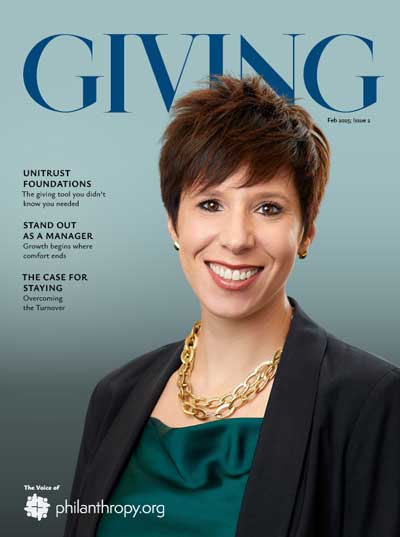High Turnover in Nonprofit Development Roles
Having spent nearly 25 years in fundraising, I can assert that money has rarely been the driving factor in my decisions to move on from an organization. For most fundraisers, including myself, it’s a passion for the cause that initially drew us into this profession—the chance to make a meaningful impact, effect lasting change, and leave the world in a better state than we found it. This passion is amplified when we can inspire others to contribute to the cause.
Yet, as fundraisers, we often find ourselves in a relentless cycle—moving from one fundraising campaign to the next, whether it’s direct mail, online appeals, or end-of-year drives. The constant pursuit of financial goals can overshadow the mission itself. This shift in focus can lead to burnout and disillusionment, not just for me but for the 51% of fundraisers who eventually choose to leave.
Mission at the Heart
Fundraising is, without a doubt, a vital component of any nonprofit organization, and I fully acknowledge its significance. However, the organizations that excel in retaining staff, across all levels, are the ones that ensure the mission remains at the heart of everything they do. When every team member, from leadership to entry-level staff, shares a deep alignment with the organization’s mission, it becomes a guiding force that keeps everyone focused, motivated, and engaged. This shared sense of purpose not only drives the organization forward but also contributes to lower turnover rates, as people feel personally connected to the work they’re doing.
Maintaining enthusiasm and commitment becomes incredibly difficult when organizational priorities stray too far from the mission’s core. If staff members and leadership are not aligned in their vision and priorities, it creates a disconnect that can undermine morale and productivity. When there’s a misalignment, staff may feel disconnected from the purpose they were initially drawn to, leading to frustration and, ultimately, burnout. Clear, consistent communication and a unified focus on the mission are essential for creating an environment where staff feel valued, supported, and motivated to stay, ensuring that their passion for the cause remains strong.
But actions speak louder than words. In my experience, there is often a significant gap between senior leaders’ perception of “what we provide” and the frontline staff’s assessment of “what we do.” Senior leadership tends to present the organization’s offerings in an overly polished light, often to appeal to funders and other external stakeholders. While this may be effective in securing support or funding, it can create a disconnect when the frontline and fundraising staff start to see a different reality. They may begin to question the validity of the claims being made and, more critically, they may start to question the intentions of leadership.
Aligning Mission with Organizational Culture

When there is a misalignment between what is communicated externally and the experiences of those on the ground, trust can erode quickly. Staff who are closest to the work can become disillusioned when they realize that the messaging does not align with the day-to-day challenges they face. This sense of disconnect can lead to frustration and a lack of confidence in leadership.
Authenticity and transparency are critical; for an organization to thrive, leaders must be willing to acknowledge the full scope of what’s happening and ensure that everyone, from the top down, is on the same page when it comes to the true nature of the work being done.
Authentic Leadership
It requires leadership to be vulnerable and authentic. True leadership means not only recognizing the challenges and disillusionments the organization may face but also communicating them openly to the staff. Leaders must be willing to admit their struggles in steering the organization forward and acknowledge that they, too, are navigating uncertain waters. This level of transparency fosters trust and shows the team that leadership is human and not above the challenges everyone else faces.
At times, staff—especially fundraisers—don’t need someone to solve their problems or provide quick fixes. What they need is a partner who is willing to walk alongside them, share in the struggles, and collaborate on solutions. Fundraisers often operate under immense pressure, and having leadership that listens, understands, and genuinely offers support can make all the difference. When leaders are vulnerable and present, it creates a culture where staff feel valued and empowered to contribute, knowing they have the backing of a team that shares the same commitment to the mission.
When leadership demonstrates vulnerability, transparency, and a genuine partnership with the team, it fosters a more profound sense of trust and commitment across the organization. Staff at all levels would feel more engaged and valued, which would ultimately lead to a more stable and motivated workforce. By prioritizing open communication and mutual support, organizations can cultivate an environment where staff are more likely to stay, not just because they’re compensated, but because they feel a genuine connection to the mission and leadership.







